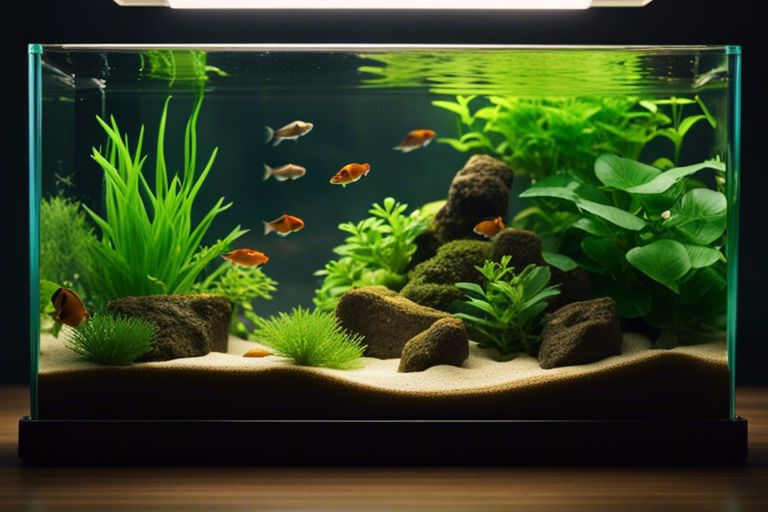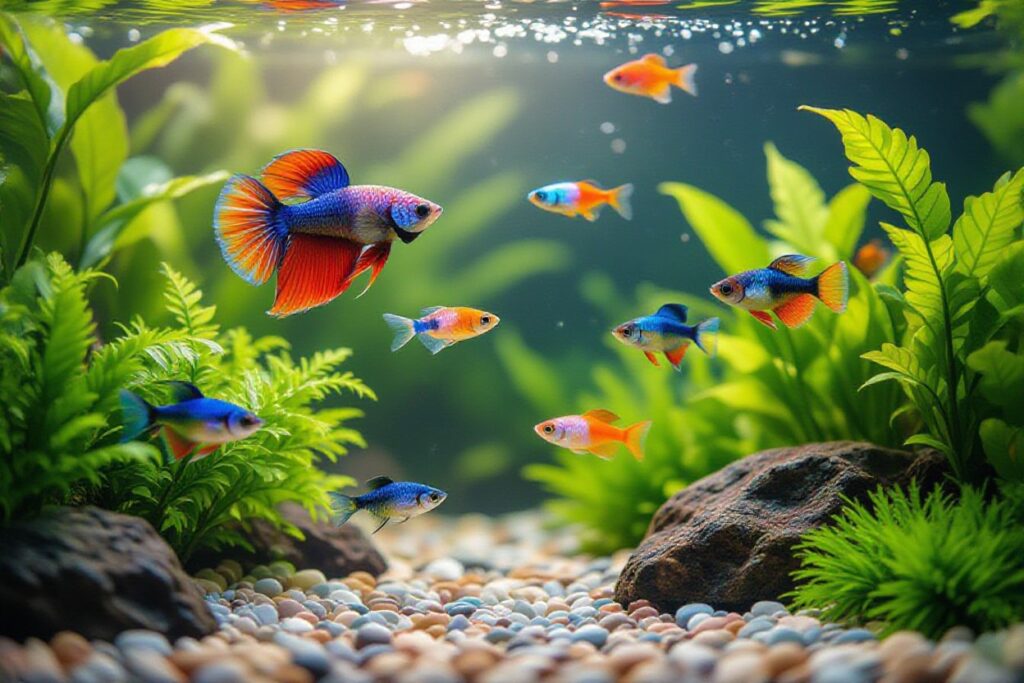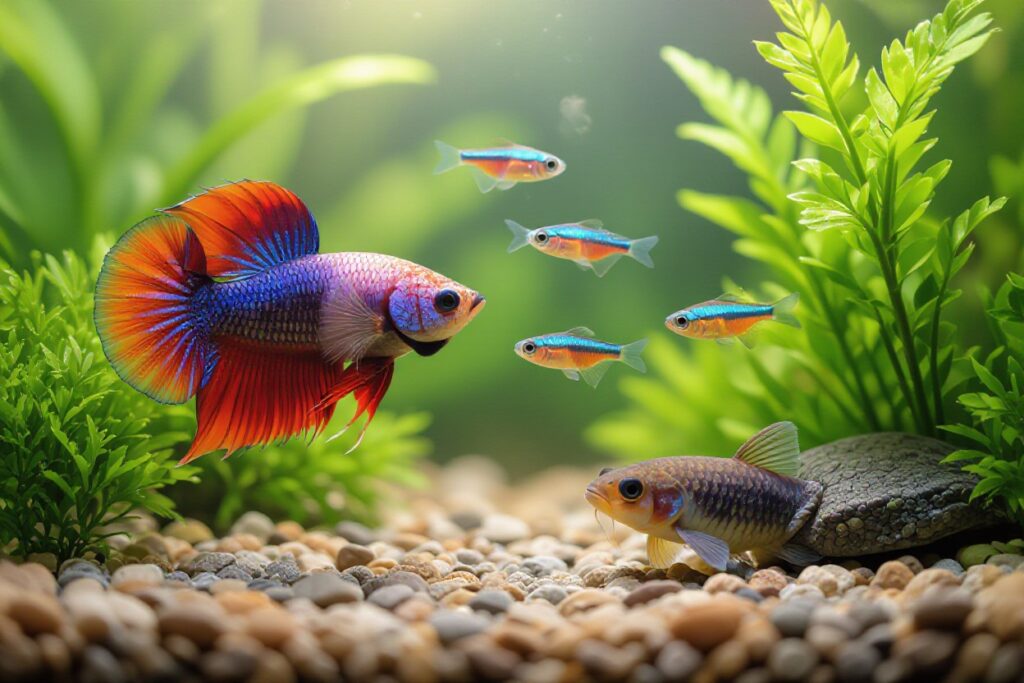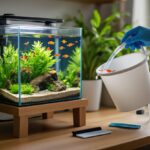Relaxing beside a fish tank can bring peace and tranquility to your space, but did you know that your finned friends also need a stress-free environment to thrive? By following these simple steps, you can ensure that your fish are living their best lives in a calm and healthy habitat. From maintaining water quality to providing appropriate tank mates, creating a stress-free environment for your fish is easier than you think. Let’s dive in and learn how to keep your underwater companions happy and stress-free.
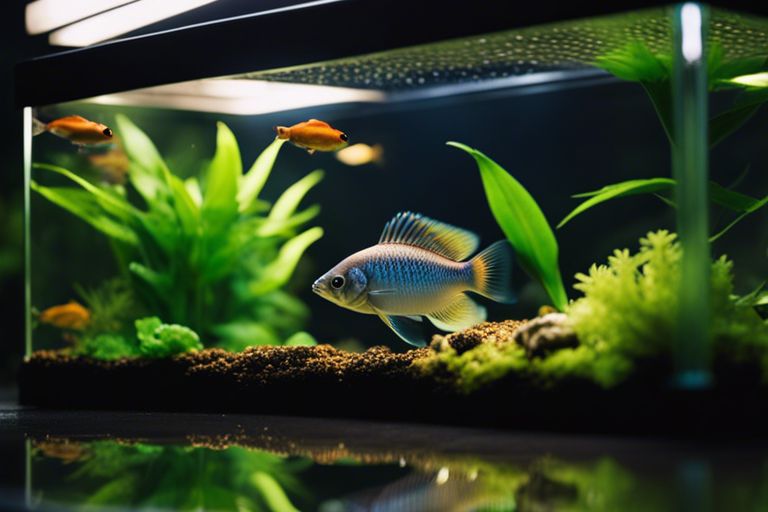
Creating the Right Ambiance
The Ideal Aquarium Setup
Before introducing fish into their new home, it is crucial to ensure that the aquarium setup is ideal. The right environment includes a properly sized tank with adequate filtration, aeration, and temperature control. Proper water quality is vital for the health and well-being of your fish, so regular maintenance is key to maintaining a stress-free environment.
Choosing the Correct Lighting and Decoration
With respect to creating a stress-free environment for your fish, choosing the correct lighting and decorations is crucial. Aquarium lighting not only enhances the aesthetics of the tank but also plays a significant role in the overall well-being of your fish. Decorations should mimic a natural underwater environment, providing hiding spots and stimulation for your fish.
Aquarium lighting should mimic natural daylight cycles to promote healthy fish behaviors and plant growth. Avoid placing the tank in direct sunlight to prevent algae growth and temperature fluctuations. With respect to decorations, opt for non-toxic materials that won’t leach harmful substances into the water. Select plants and ornaments that provide hiding spots and prevent overcrowding in the tank.
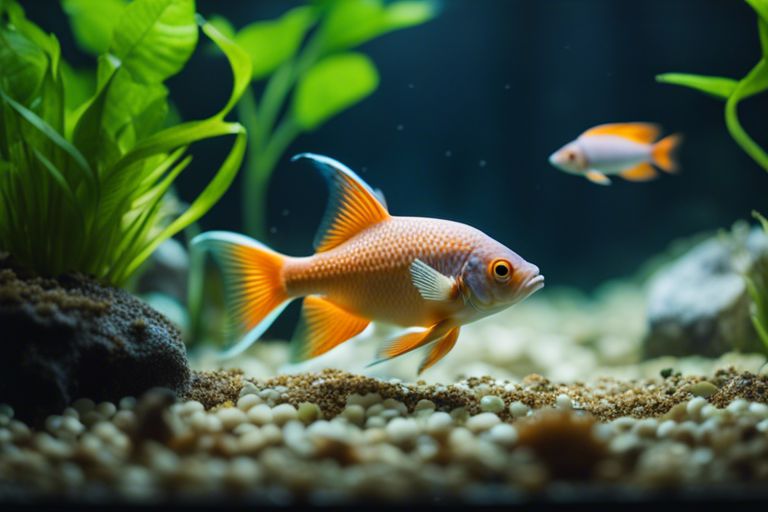
Water Quality and Maintenance
The Basics of Water Chemistry
An vital aspect of maintaining a stress-free environment for your fish is understanding the basics of water chemistry. An optimal pH level, proper levels of ammonia, nitrite, and nitrate, as well as the right water hardness, are crucial for the health and well-being of your aquatic pets.
Regular Maintenance Routines
To ensure a healthy ecosystem for your fish, establish regular maintenance routines. This includes checking and adjusting water parameters, conducting partial water changes, cleaning the tank and filter regularly, and monitoring the overall cleanliness of the aquarium environment. Consistency in these tasks is key to preventing stress and maintaining a thriving aquatic habitat.
Quality equipment and testing kits are vital for monitoring and maintaining water quality. Invest in a reliable water testing kit to regularly check parameters such as pH, ammonia, nitrite, and nitrate levels. High-quality filters and heaters are also crucial for ensuring a stable and clean environment for your fish.
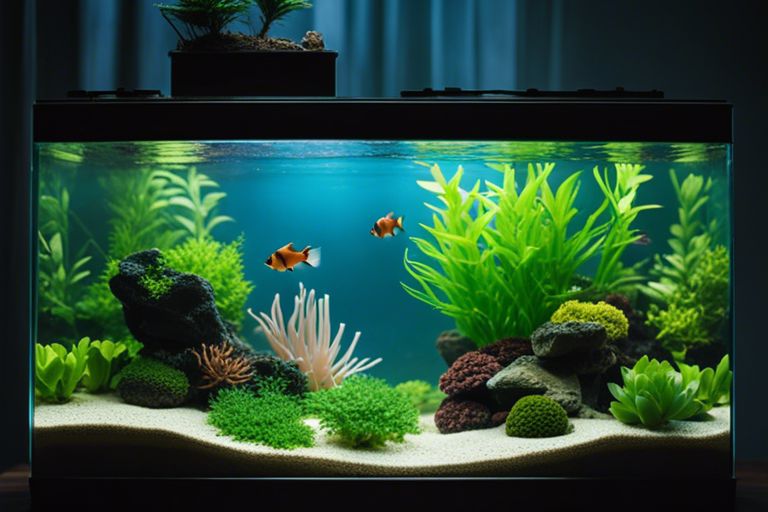
Fish Compatibility and Social Environment
Choosing the Right Fish Companions
Keep in mind that not all fish get along with each other. When selecting fish companions for your tank, consider the size, temperament, and behavior of each species. Some fish may be more aggressive and territorial, while others are peaceful community fish. Research each species’ compatibility and choose fish that will coexist harmoniously.
Managing Aggression and Territory
For a stress-free environment, it is crucial to manage aggression and territory within your aquarium. Social hierarchy can develop among fish, leading to aggressive behavior and territorial disputes. To prevent conflicts, provide plenty of hiding spots and visual barriers to create separate territories. Additionally, monitor your fish regularly and intervene if aggressive behavior becomes a problem.
Understanding the natural behavior of each fish species is key to maintaining a peaceful social environment. Some fish are naturally more territorial and aggressive, while others prefer to school or live in pairs. By observing your fish’s behavior and addressing any signs of aggression early on, you can create a harmonious community where all fish can thrive.
Diet and Nutrition
Feeding Your Fish Properly
Nutrition is necessary for the health and well-being of your fish. It’s important to provide a balanced diet that meets their specific dietary needs. Overfeeding can lead to water quality issues and health problems for your fish, so it’s crucial to feed them the right amount and avoid excess food waste in the tank.
The Role of Nutrition in Stress Reduction
On top of providing necessary nutrients for growth and overall health, a proper diet plays a significant role in reducing stress in fish. High-quality food can help boost their immune system, making them more resilient to diseases and environmental stressors. It also contributes to enhancing their overall well-being and reducing the likelihood of aggressive behavior among tank mates.
With a well-rounded diet rich in vitamins, minerals, and proteins, you can ensure that your fish are receiving the necessary nutrition to thrive in a stress-free environment. Investing in high-quality fish food and feeding them appropriately will go a long way in keeping your aquatic friends healthy and happy.
Monitoring and Prevention
Regular Observation for Early Detection of Stress
All fish owners should make a habit of closely monitoring their aquatic companions on a regular basis. Conduct daily visual checks to observe their behavior, appetite, and overall condition. Changes in swimming patterns, loss of color, or unusual hiding could indicate signs of stress. By catching these early signs, you can address any issues promptly and prevent further complications.
Preventive Measures and Solutions
There’s no substitute for proactive measures to create a stress-free environment for your fish. Start by ensuring proper water quality through regular testing and maintenance of the aquarium. Maintain stable water parameters, including temperature, pH levels, and ammonia levels, to prevent stress. Additionally, provide adequate hiding spots, suitable tank mates, and a balanced diet to promote the well-being of your aquatic pets.
Plus, consider the size of your aquarium in relation to the number and species of fish you have. Overcrowding can increase competition for resources and lead to stress; therefore, it’s imperative to follow recommended stocking guidelines to create a harmonious tank environment.
To wrap up
Taking this into account, creating a stress-free environment for your fish is crucial for their health and well-being. By providing adequate space, maintaining clean water, regulating temperature and lighting, choosing appropriate tank mates, and minimizing sudden changes, you can help reduce stress levels in your aquatic pets. Remember that a stressed fish is more susceptible to diseases and may exhibit abnormal behavior. By incorporating these tips into your fish care routine, you can ensure a harmonious and serene environment for your beloved aquatic creatures.
FAQ
Q: Why is it important to create a stress-free environment for your fish?
A: Creating a stress-free environment for your fish is crucial because stress can weaken their immune system, making them more susceptible to diseases and other health issues.
Q: What are some signs that indicate a fish is stressed?
A: Signs of stress in fish include loss of appetite, unusual swimming patterns, gasping at the water surface, faded colors, and aggression towards tank mates.
Q: How can I maintain water quality to reduce stress in my fish?
A: Regularly test the water parameters such as pH, ammonia, nitrite, and nitrate levels. Perform regular water changes and ensure proper filtration to maintain optimal water quality.
Q: What can I do to provide a comfortable habitat for my fish?
A: Provide hiding spots and decorations to create a sense of security for your fish. Ensure the tank size is appropriate for the fish species and maintain stable water parameters.
Q: How important is lighting in reducing stress for fish?
A: Lighting plays a crucial role in regulating the fish’s natural day and night cycle. Provide a consistent lighting schedule with adequate periods of darkness to reduce stress in fish.
Q: Are there any specific feeding tips to reduce stress in fish?
A: Feed your fish a varied and balanced diet to meet their nutritional needs. Avoid overfeeding, as uneaten food can pollute the water and lead to stress in fish.
Q: What should I do if I suspect that my fish is stressed?
A: If you notice signs of stress in your fish, first check water parameters to ensure they are within the appropriate range. Make necessary adjustments to the tank environment and observe the fish for any improvements. If the stress persists, consult a vet specializing in aquatic animals for further guidance.
